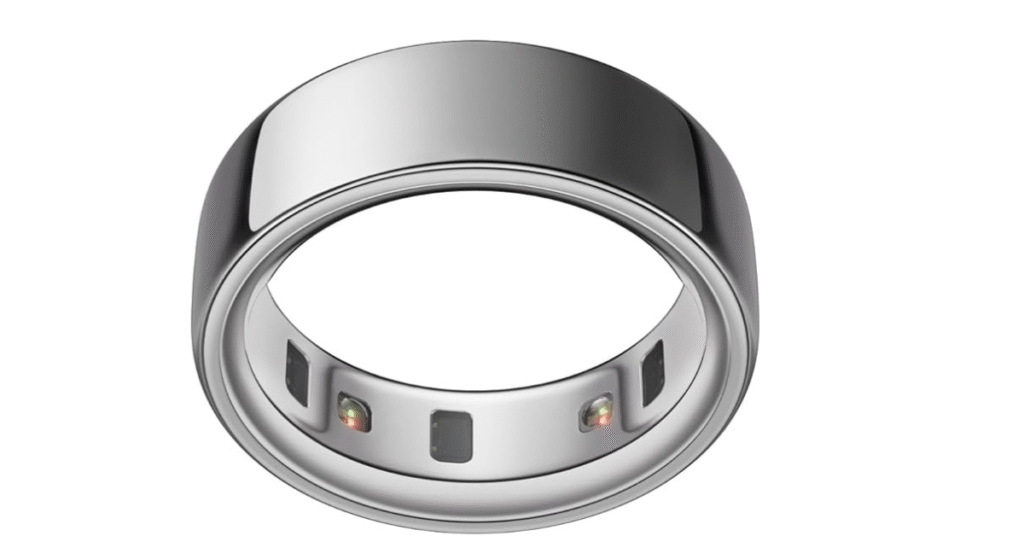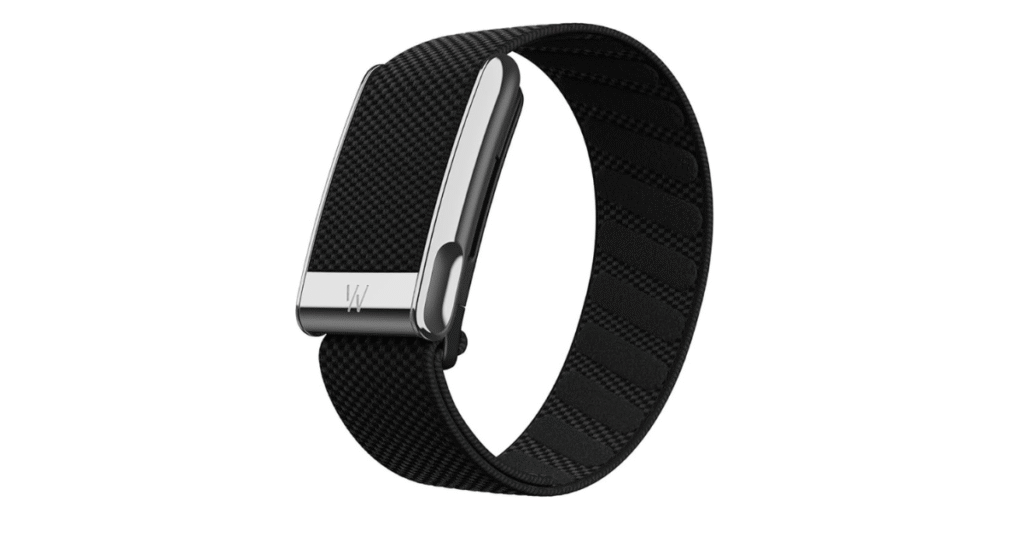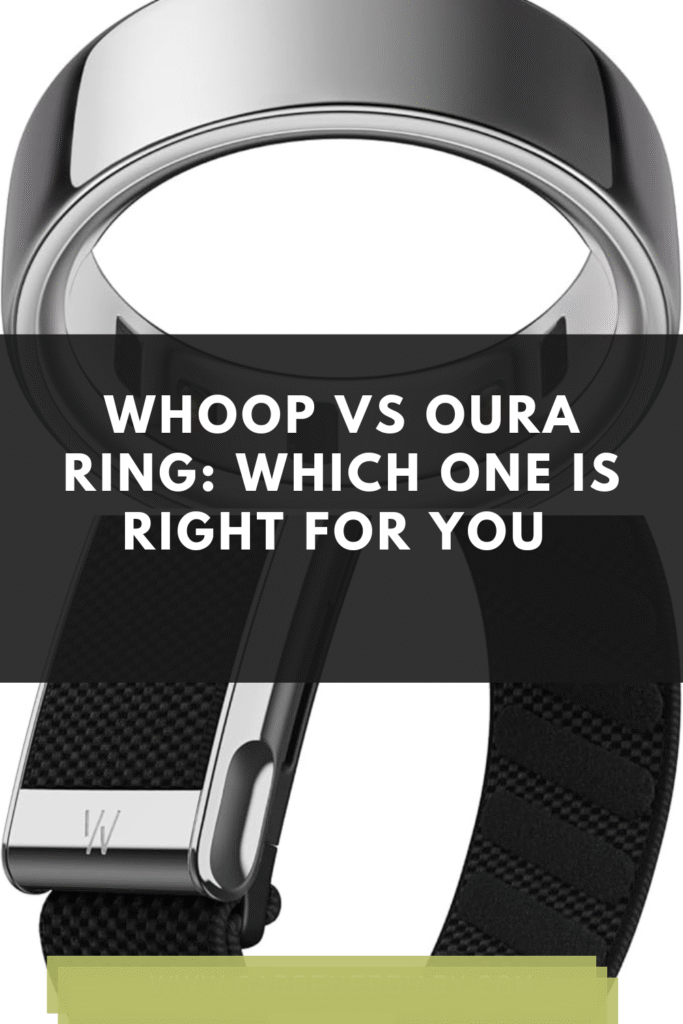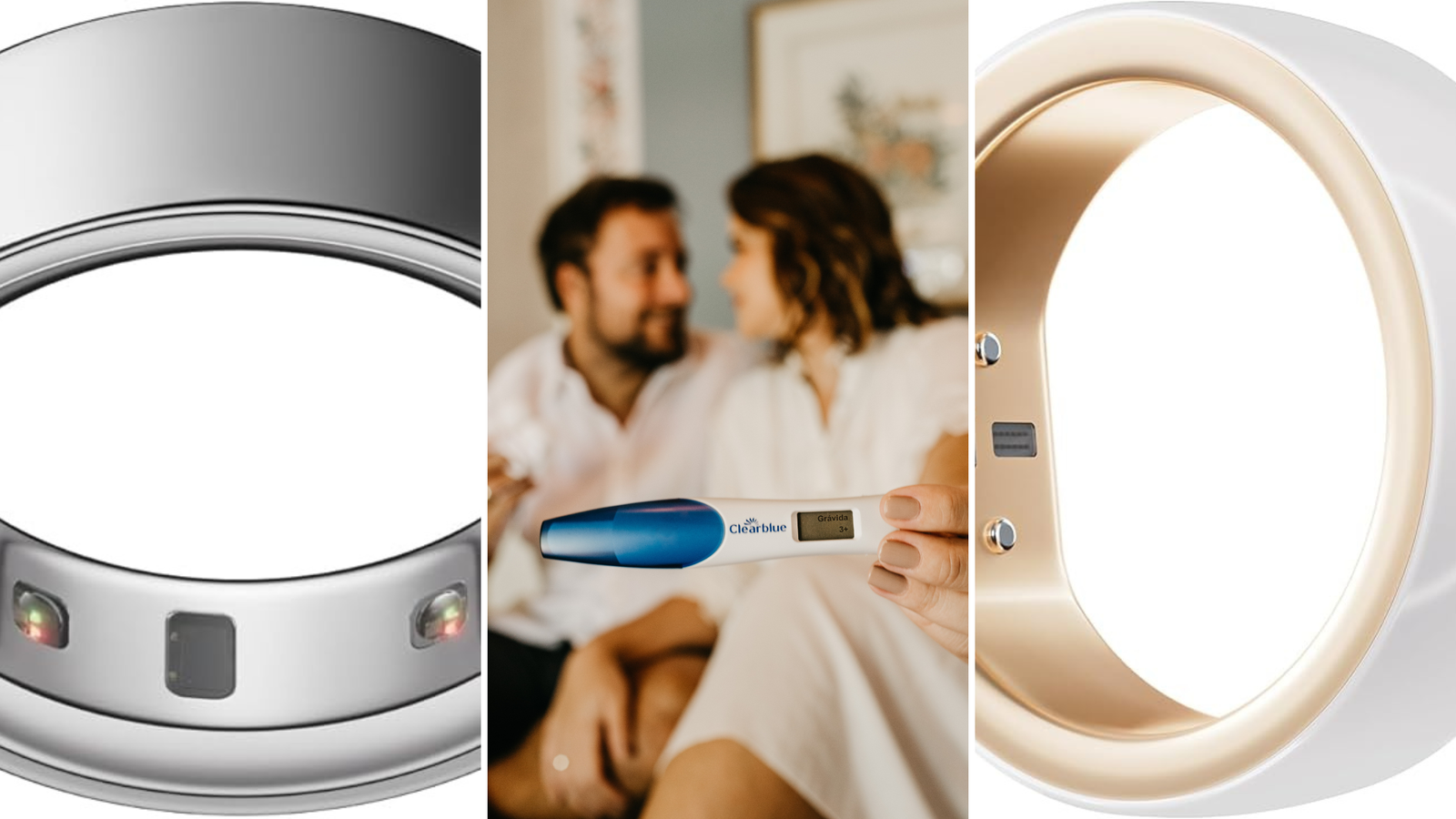If you’re serious about tracking your sleep, recovery, and overall health, two big names probably come to mind: the Oura Ring and Whoop. Both are designed for people who want to monitor how their body responds to daily stress, rest, and workouts — but they work differently. This comparison will help you understand their strengths and weaknesses, so you can decide which one fits your lifestyle.
Key Takeaway
Choose the Oura Ring for accurate sleep tracking, cycle insights, and all-day comfort. Pick Whoop if you’re focused on workout performance, recovery, and real-time fitness feedback. Your ideal choice depends on whether you prioritize overall wellness or athletic performance.
Overview of the Oura Ring

The Oura Ring is a smart ring that provides sleep tracking, temperature trends, heart rate monitoring, and recovery insights. It’s small, stylish, and worn on the finger.
Key features:
- Tracks sleep quality and stages
- Measures resting heart rate and heart rate variability (HRV)
- Monitors body temperature continuously
- Gives readiness, activity, and sleep scores
- Supports period prediction with fertility apps
You can read more about how it works here, or see their about page. It also offers integrations with Apple Health, Natural Cycles, and Google Fit.
Oura is also great for cycle tracking and fertility planning. It pairs well with apps like Natural Cycles, making it a smart choice for people with irregular periods or PCOS. See our guide on the best fertility tracker for PCOS.
Overview of Whoop

The Whoop is a strap-style fitness wearable worn on the wrist or upper arm. Unlike typical fitness trackers, it focuses on optimizing recovery, strain, and sleep rather than counting steps or calories.
Key features:
- Tracks heart rate and HRV continuously
- Measures strain from workouts and daily activity
- Gives a recovery score based on sleep, strain, and HRV
- Monitors respiratory rate, skin temperature, and blood oxygen
- Offers personalized coaching through its mobile app
More details about how it works can be found here.
Whoop is ideal for athletes, biohackers, and anyone focused on improving fitness performance and recovery.
Pros and Cons of Oura Ring
Pros:
- Comfortable and discreet ring form
- Excellent sleep and readiness tracking
- Useful for fertility tracking — see Oura Ring vs Femometer
- Works well with period and fertility apps
Cons:
- Requires a monthly subscription for full features
- Less effective for workout strain tracking compared to Whoop
- No screen or workout display
Pros and Cons of Whoop
Pros:
- Designed for detailed workout strain and recovery analysis
- Offers 24/7 HRV, strain, and recovery monitoring
- Includes guided coaching and personalized feedback
- Good for athletes and fitness enthusiasts
Cons:
- Requires a monthly membership
- Bulky strap may be uncomfortable for some users
- Not built for fertility tracking or temperature-based predictions
For users interested in hormone tracking and fertility testing, you may want to explore Mira vs Inito vs Proov, or check our comparison of Inito vs Proov and Inito reviews.
Key Differences at a Glance
| Feature | Oura Ring | Whoop |
|---|---|---|
| Form | Ring | Strap (wrist or arm) |
| Subscription | Required for full features | Required |
| Sleep Tracking | Yes | Yes |
| Recovery Insights | Yes (readiness score) | Yes (recovery score) |
| Workout Strain Tracking | Basic | Advanced |
| Fertility Support | Yes, with Natural Cycles | No |
| Ideal For | General wellness and cycle tracking | Athletes and high-performance training |
Buying Guide: Choosing Between Oura Ring and Whoop
Picking the right wearable depends on your health goals, lifestyle, and how much data you want to track. Here are simple tips to help you choose:
1. Health or Fitness Focus
- Choose Oura Ring if you care more about sleep, recovery, and overall wellness. It works great for tracking cycles and stress.
- Choose Whoop if you’re focused on performance, training strain, and optimizing workouts.
2. Form and Comfort
- Oura is a ring. It’s light, discreet, and ideal for 24/7 wear.
- Whoop is a strap worn on the wrist or arm. It’s better for workouts but might feel bulky.
3. Subscription Costs
- Both require monthly subscriptions.
- Whoop is only available through a membership. Oura requires a subscription for full access, but the ring itself is a one-time purchase.
4. Fertility and Cycle Tracking
- Oura supports period prediction and can integrate with fertility apps like Natural Cycles.
- Whoop does not support fertility tracking. For better hormone tracking options, check Mira vs Inito vs Proov or Inito vs Proov.
5. Mobile App and Insights
- Oura gives clear scores for readiness, sleep, and activity.
- Whoop focuses more on recovery, strain, and coaching to guide your workouts.
6. Battery Life
- Oura lasts up to 7 days.
- Whoop lasts 4–5 days and allows charging while worn.
FAQs: Oura Ring vs Whoop
Which is better for sleep tracking?
Both track sleep well, but Oura is known for more accurate sleep stage data and personalized sleep insights.
Can I use Oura or Whoop without a subscription?
You can use Oura with limited features without a subscription. Whoop requires an active subscription to use the device at all.
Does either track fertility or ovulation?
Only Oura Ring supports cycle tracking and can work with fertility apps. See our review of Oura Ring vs Femometer for more options.
Which is more comfortable to wear daily?
Oura is more comfortable due to its small ring design. Whoop may be bulky for everyday wear but is better during workouts.
Can teens use Oura or Whoop?
Oura is more suitable for teens interested in wellness and sleep tracking. For more options, see best period tracker for teens.
Which is better for athletes?
Whoop is built for athletes. It gives detailed training feedback, recovery scores, and coaching tools.
Is heart rate tracking accurate on both devices?
Yes, both offer continuous heart rate tracking. Whoop is slightly better for real-time tracking during workouts.
Can either track body temperature?
Yes, both track skin or body temperature. Oura uses this for readiness and fertility, while Whoop includes it in its recovery score.
Do they sync with fitness apps?
Oura integrates with Apple Health, Google Fit, and others. Whoop also syncs with fitness apps like Strava and Apple Health.

Which should I get if I have irregular cycles or PCOS?
Oura Ring is better for people with irregular cycles or PCOS. For more fertility insights, see our post on the best fertility tracker for PCOS.
Conclusion: Oura Ring or Whoop?
Choose the Oura Ring if you want a comfortable and stylish health tracker focused on sleep, temperature, and fertility insights. It’s a great option for daily wellness and hormonal cycle monitoring. It also works well with irregular cycles, as discussed in our PCOS tracker guide.
Go for Whoop if your priority is performance, recovery, and strain tracking. It offers in-depth training insights and personalized feedback, especially helpful for active individuals or competitive athletes.
Still unsure? Check out our post on Oura Ring vs Femometer to see how Oura compares with other fertility-focused wearables.


